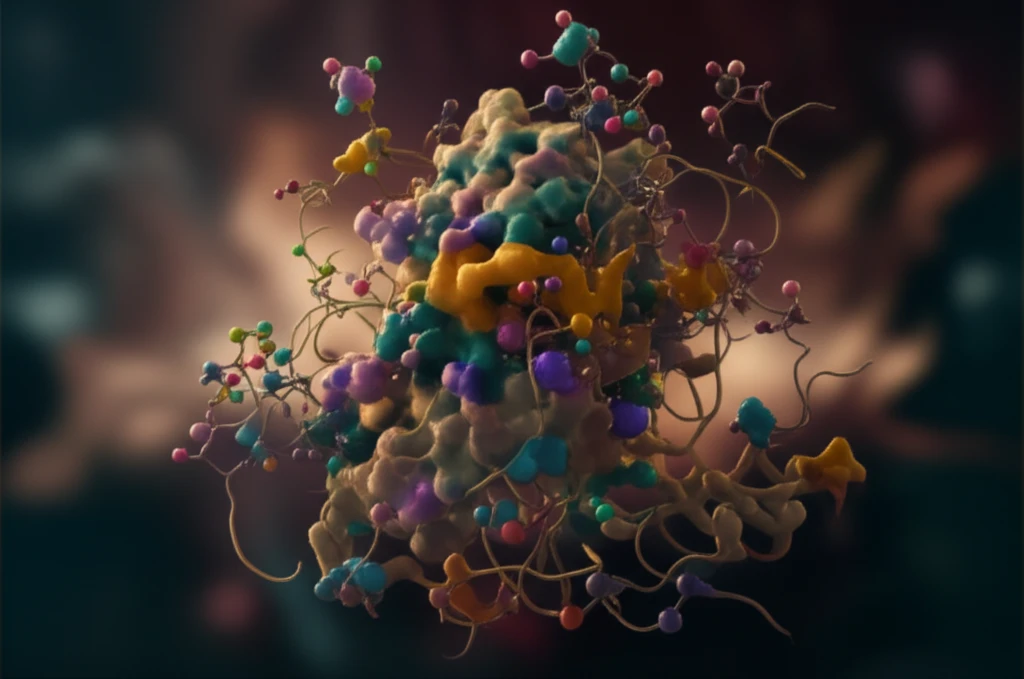
Unlock Protein Potential: A Guide to Metal-Mediated Bioconjugation
"Harnessing the power of transition metals for targeted protein modification and advanced bioconjugation strategies."
Modifying natural proteins with precision is a significant challenge in biochemistry. Traditional methods often lack the necessary selectivity and scope for complex applications. However, transition metals are emerging as powerful tools to overcome these limitations. Their unique reactivity, orthogonal to biological processes, allows scientists to functionalize proteins in unprecedented ways.
Metal-mediated bioconjugation complements existing techniques, offering possibilities beyond conventional nucleophile-electrophile or cycloaddition reactions. While enzymatic and unnatural amino acid incorporation methods are valuable, metal-based approaches provide unique chemical handles for selective modification.
This article explores recent advances in metal-mediated bioconjugation, focusing on methods that directly act on natural protein substrates. It examines reactivity, selectivity, and mechanistic details, providing a comprehensive overview for researchers and those interested in the future of protein engineering.
Metal-Mediated Bioconjugation: A Toolbox for Protein Modification

Transition metals are revolutionizing how we manipulate proteins. They offer a diverse range of reactions that can selectively target specific amino acids or regions within a protein structure. This precision is crucial for applications such as drug delivery, diagnostics, and creating new biomaterials.
- Redox-Based Bioconjugation: Uses single-electron transfer (SET) processes with metals like nickel, ruthenium, or photo-induced techniques to modify tyrosine and cysteine residues.
- Metallocarbene Transfer: Catalytic metallocarbene intermediates facilitate unique modifications, exemplified by dirhodium catalysts targeting tryptophan.
- Cross-Coupling Reactions: Palladium, gold, and nickel-catalyzed cross-coupling reactions enable bond formation between protein residues and external molecules. These reactions target tyrosine, tryptophan, cysteine, lysine, and even the protein backbone.
- Metallation: Direct incorporation of metal complexes adds new properties to proteins, impacting folding, assembly, and catalytic activity. Histidine is a common target for metal coordination.
- Proximity-Driven Chemistry: Combines a reactive reagent or catalyst with a protein-binding fragment for site-specific modification. Rhodium and ruthenium complexes are used in this approach.
The Future of Protein Engineering with Transition Metals
Metal-mediated bioconjugation is a rapidly evolving field, promising to overcome limitations of traditional protein modification techniques. By leveraging the unique reactivity of transition metals, researchers are gaining unprecedented control over protein function and structure.
While many of these methods are still in the early stages of development, they hold immense potential for creating new therapeutics, diagnostics, and biomaterials. As research progresses, we can expect to see metal-mediated bioconjugation play an increasingly important role in protein engineering and biotechnology.
Further exploration of the 'periodic table of bioconjugation' will uncover new metals and reactivity, expanding our ability to manipulate proteins for a wide range of applications. The future is bright for those seeking to unlock the full potential of these essential biomolecules.
